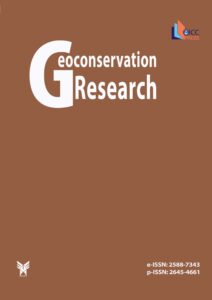Smaller than Small, the Unique Eocene Louse!
Authors
- Martin Koziol * 1
- Torsten Wappler 2
Abstract
Some of the most spectacular fossil deposits of the European Tertiary are former maars located in old volcanic field areas. The Tertiary volcanic field of the High Eifel (THV) lies between the two Quaternary volcanic fields of the West and East Eifel and extends far into the West Eifel. The Eckfelder Maar lies on the south-western edge of the THV. The extraordinarily rich fossil record documents a species-rich terrestrial flora and fauna, ranging from algae and pollen grains to coherent mammal skeletons, some with soft tissue preservation and stomach contents. Among the most significant insect finds to date is the world’s first record of a fossil bird louse (order Phthiraptera). The Eckfeld louse has survived in excellent quality and, despite its small size (length 6.7 mm), shows an abundance of detail, so that it has been possible to clarify the relationships of the find and thus also the probable host range. Their present-day relatives live on shorebirds and ducklings.
Read the full text of the articleKeywords
Main Subjects
References
Koziol M & Röhl S (2002). Geotope auf der Georoute Vulkaneifel um Manderscheid. Scriptum, Krefeld 9: 61–69.
Lutz H, Kaulfuss U, Wappler T, Löhnertz W, Wilde V, Mertz DF, Mingram J, Franzen JL, Frankenhäuser H & Koziol M (2010). Eckfeld Maar: window into an Eocene terrestrial habitat in Central Europe. Acta Geologica Sinica. 84: 984–1009.
Wappler T, Smith VS, & Dalgleish RC (2004). Scratching an ancient itch: an Eocene bird louse fossil. Proceedings of the Royal Society B. 271: 255–258.



